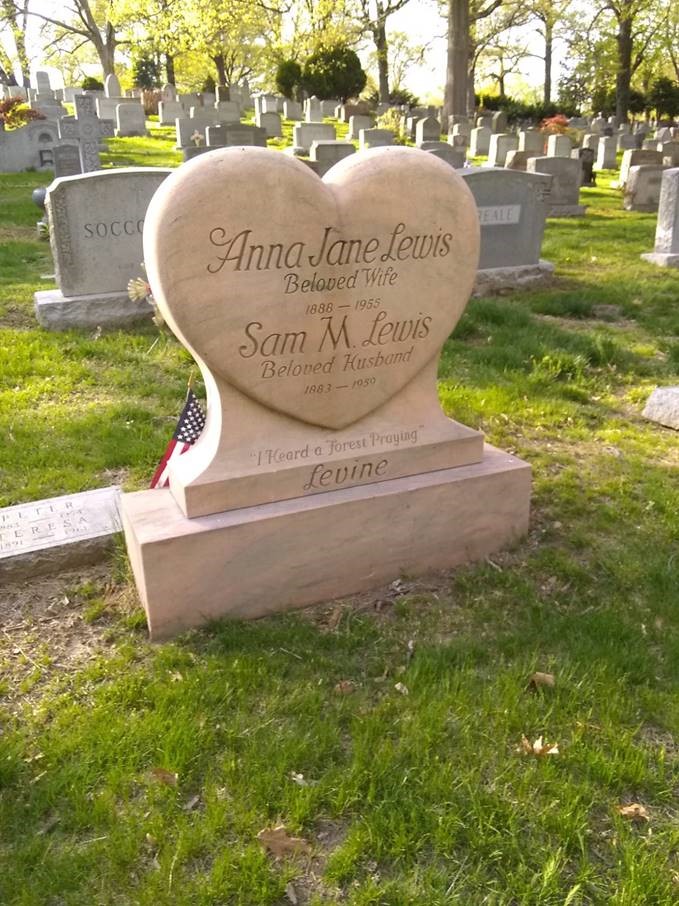
Before jazz beats filled the streets of Midtown Manhattan, the sounds of upright pianos playing catchy tunes were heard along Tin Pan Alley. It was back in the days before radio, when every home had a piano and families bought sheet music to play their favorite songs. Through the leaders of the Tin Pan Alley American Popular Music Project, Woodlawn staff became aware that many of the great songwriters and illustrators who were part of the 28th Street music publishing scene are memorialized here.

Charles K. Harris, best known for his incredibly popular 1891 composition, “After the Ball,” is considered one of the earliest contributors to the Tin Pan Alley movement. Of course, the most famous of the writers was Irving Berlin whose first hit was “Alexander’s Rag Time Band.” Among his classic compositions was “Blue Skies,” a standard of the American Songbook, performed throughout the years by Frank Sinatra, Ella Fitzgerald, and Willie Nelson.

If you wander Woodlawn’s grounds you will come across the monuments to many Tin Pan Alley notables, including Gus Edwards (“By the Light of the Silvery Moon & School Days”), Nora Bayes (“Shine on Harvest Moon”), George M. Cohan (“You’re a Grand Old Flag”), Chauncey Olcott (“When Irish Eyes are Smiling”), and Sam Lewis (“Five Foot Two Eyes of Blue”). The Tin Pan Alley composers were more than musicians; they were activists, too. In 1914, Irving Berlin, Gene Buck, Victor Herbert, Chauncey Olcott, and George M. Cohan were among the founders the American Society of Composers, Authors and Publishers (ASCAP), a performance rights organization that licenses compositions, providing long term revenue for composers.
On Sunday, April 30th, the Woodlawn Conservancy will host its first Tin Pan Alley tour with George Calderaro, the Director of the American Popular Music Project. Join us for an afternoon of classic songs and fond memories aboard the Woodlawn Trolley. To register, please click here.
